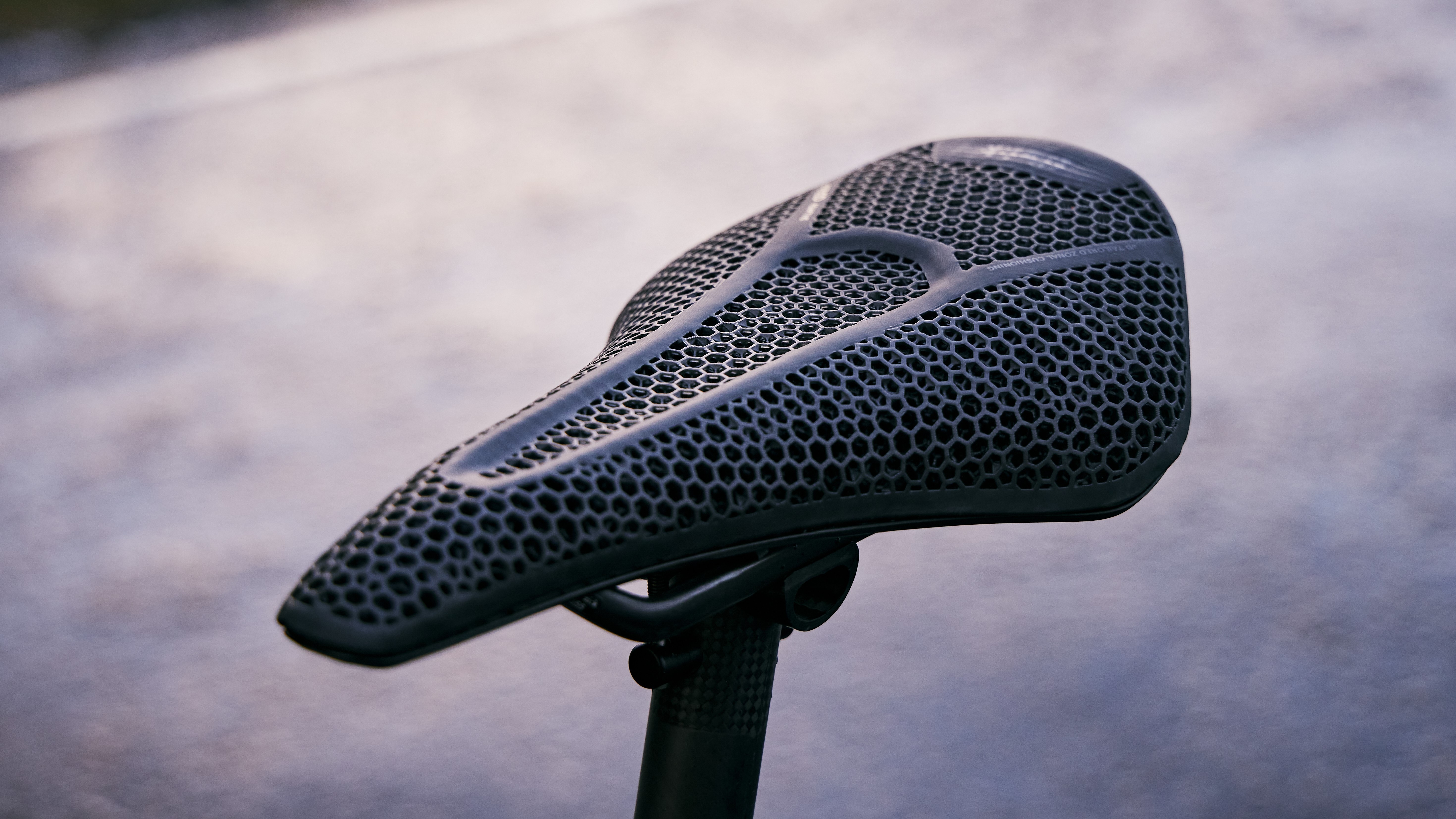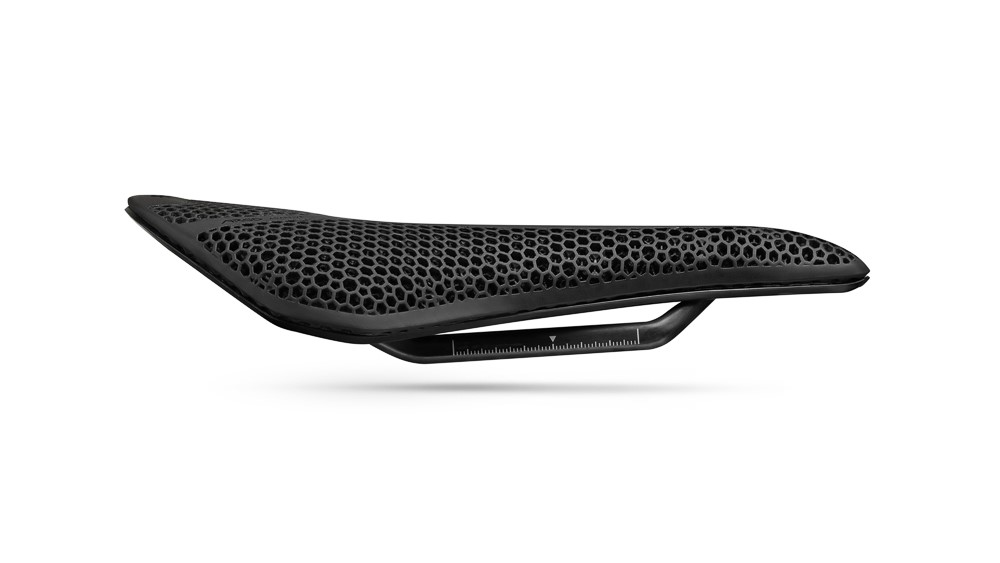Fizik expands 3D-printed saddle range with new Argo Adaptive
On show at Sea Otter, the new Fizik Argo Adaptive adds lattice cushioning to the brand's snub-nosed saddle

Since debuting a 3D printed saddle in 2019, Fizik has only offered the technology in its Antares model. Now, with a preview at Sea Otter, it’s transferred the tech to its short-nosed Argo model, with the new Argo Adaptive.
3D printed cushioning is a relatively new tech in the world of saddles, but not so new that we haven't already got a guide to the best 3D printed saddles. It is however a segment that is confined to either Specialized or Fizik, resulting in something of a low-key arms race to bring new options to market. This time it’s Fizik's turn, with an ‘Adaptive’ version of its short-nose road saddle, the Argo, to compete with the S-Works Power with Mirror from the Big S.
Same shape, new padding
Short-nose saddles are becoming increasingly popular on road bikes, particularly for those riders who like to maintain an aggressive position and ride ‘on the rivet’ for longer periods. The shorter, wider nose, in theory, reduces pressure on the soft tissue when chewing your stem. It’s not a shape for everyone however (the same could be said of any model) - we’ve tested both the Vento Argo R5 (with a cut-out) and the gravel-focussed Terra Argo X3 with mixed results, so will some new cushioning help? Fizik certainly hopes so.
The aim of both the shape of the saddle and the adaptive cushioning is to keep the rider locked in place and avoid unnecessary changes of position. The lattice cushioning can be designed in such a way that it provides more or less cushioning in certain areas to adapt to different riding positions (on the tops vs. drops, for example). Some saddles aim to achieve this with different foam densities, but that then runs the risk of adding pressure at the transition zones, which 3D printing aims to avoid. Also, being a lattice, it results in a lighter saddle too.
The zonal cushioning within the Argo Adaptive, Fizik claims, reduces the maximum pressure the rider will experience, and accounts for varying sit bone widths.

Models and pricing
The Argo Adaptive will be available in two widths (140mm and 150mm) in both an R1 carbon railed option and a cheaper R3 version with K:ium alloy rails. These will retail at £299 / $299 / €299 and £259 / $259 / €250 respectively, and weigh in at 190g and 224g for the 140mm widths.
Both models are black, with no option for the opinion-splitting milky green as seen on the Antares, and will be available at the end of the month for consumers.
The latest race content, interviews, features, reviews and expert buying guides, direct to your inbox!

Will joined the Cyclingnews team as a reviews writer in 2022, having previously written for Cyclist, BikeRadar and Advntr. He’s tried his hand at most cycling disciplines, from the standard mix of road, gravel, and mountain bike, to the more unusual like bike polo and tracklocross. He’s made his own bike frames, covered tech news from the biggest races on the planet, and published countless premium galleries thanks to his excellent photographic eye. Also, given he doesn’t ever ride indoors he’s become a real expert on foul-weather riding gear. His collection of bikes is a real smorgasbord, with everything from vintage-style steel tourers through to superlight flat bar hill climb machines.
